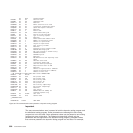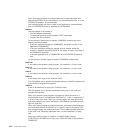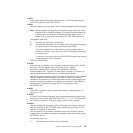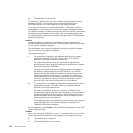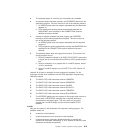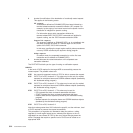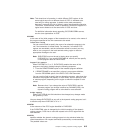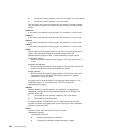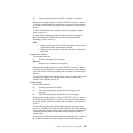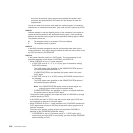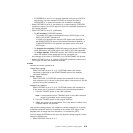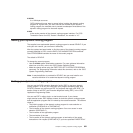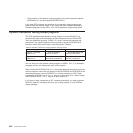Note: This mixed level of operation, in which different CICS regions in the
same logical server are at different levels of CICS, is intended to be
used only for rolling upgrades. It should not be used permanently,
because it increases the risk of failure in some interoperability scenarios.
The normal, recommended, mode of operation is that all the regions in a
logical sever should be at the same level of CICS and Java.
For definitive information about upgrading CICS EJB/CORBA servers,
see the Java Applications in CICS.
DYRLPROG
is the name of the initial program of the transaction to be routed; or the name of
the program specified on the link command to be routed.
Transaction routing
You can use this field to specify the name of an alternative program to be
run if the transaction is routed locally. For example, if all remote CICS
regions are unavailable, and the transaction cannot be routed, you may
want to run a program in the local terminal-owning region to send an
appropriate message to the user.
Note: DYRLPROG must not be set to blanks when you specify
DYRCABP=N. If you specify DYRCABP=N, ensure you also specify
a valid program name on DYRLPROG.
Program-link requests
When DYRFUNC is ‘0’ or ‘3’, DYRLPROG contains the name of the
program to be linked, obtained using the following sequence:
1. From the REMOTENAME option of the installed program definition
2. If REMOTENAME is not specified, or there is no program definition,
from the PROGRAM option of the EXEC CICS LINK command.
You can use this field to specify that an alternative program, other than that
named on the program-link request, is to be linked. You can specify a local
or remote program, depending on the region to which the request is to be
routed.
Note: Be aware that, if you change the value of DYRLPROG, and the
alternate program you choose is defined as DYNAMIC(YES), the
dynamic routing program will be reinvoked for route selection.
bridge requests
When DYRTYPE=8, this field should not be changed; any changes made
are ignored by CICS.
You can change DYRLPROG on any call to the dynamic routing program, but it
is effective only when DYRFUNC is ‘0’ or ‘1’.
DYRNETNM
is the netname of the CICS region identified in DYRSYSID.
If the DYRNETNM value is changed by the initial invocation of the dynamic
routing program, CICS tries to route the request to the CICS region with the
new netname.
DYROPTER
specifies whether the dynamic routing program is to be reinvoked when the
routed transaction or link request terminates (successfully or unsuccessfully).
The possible values are:
Chapter 17. Writing a dynamic routing program 615




